60 Underrated Playstation One Games
Here are our picks for the top 60 underrated PlayStation One games for the console that changed home gaming as we know it...
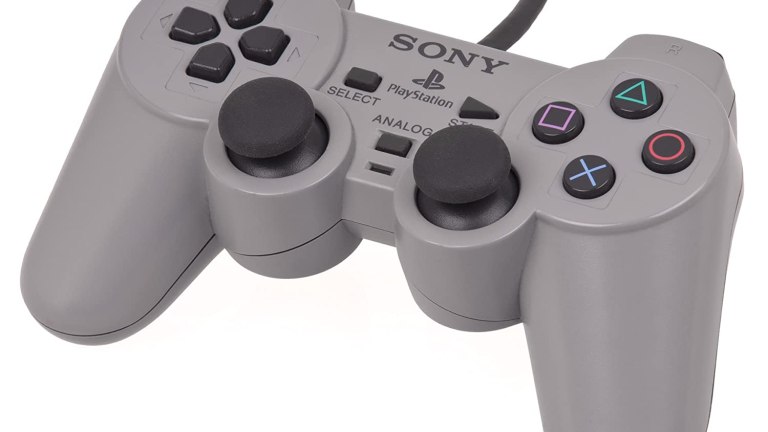
Sony’s original PlayStation was launched in Japan in 1994, hitting the rest of the world in 1995, and it proceeded to revolutionize the console market. It took a pastime that was seen as exclusive to geeks and children, and turned it into a true mainstream phenomenon. PlayStation made gaming “cool,” and it brought with it a huge catalog of games, introducing us to all-time classics like Final Fantasy VII, Metal Gear Solid, Wipeout, Resident Evil, and many, many more.
However, for all the critically and publicly acclaimed titles the unit had, it also had a whole selection of underappreciated releases. Some of these are titles that may not be for everybody, but still offer superb entertainment to many Others are simply great, but failed to shine due to poor advertising or low sales. These facts don’t change the quality of these titles, and here we’re going to take a look at our own top 60.
Of course, being a list of underappreciated games, these are titles that range from obscure, cult classics to games that just didn’t sell, despite being good releases in their own right, so don’t expect to see acclaimed titles like the aforementioned Metal Gear or Final Fantasy VII here. Let’s not waste any more time and get to it…
60. YoYo’s Puzzle Park
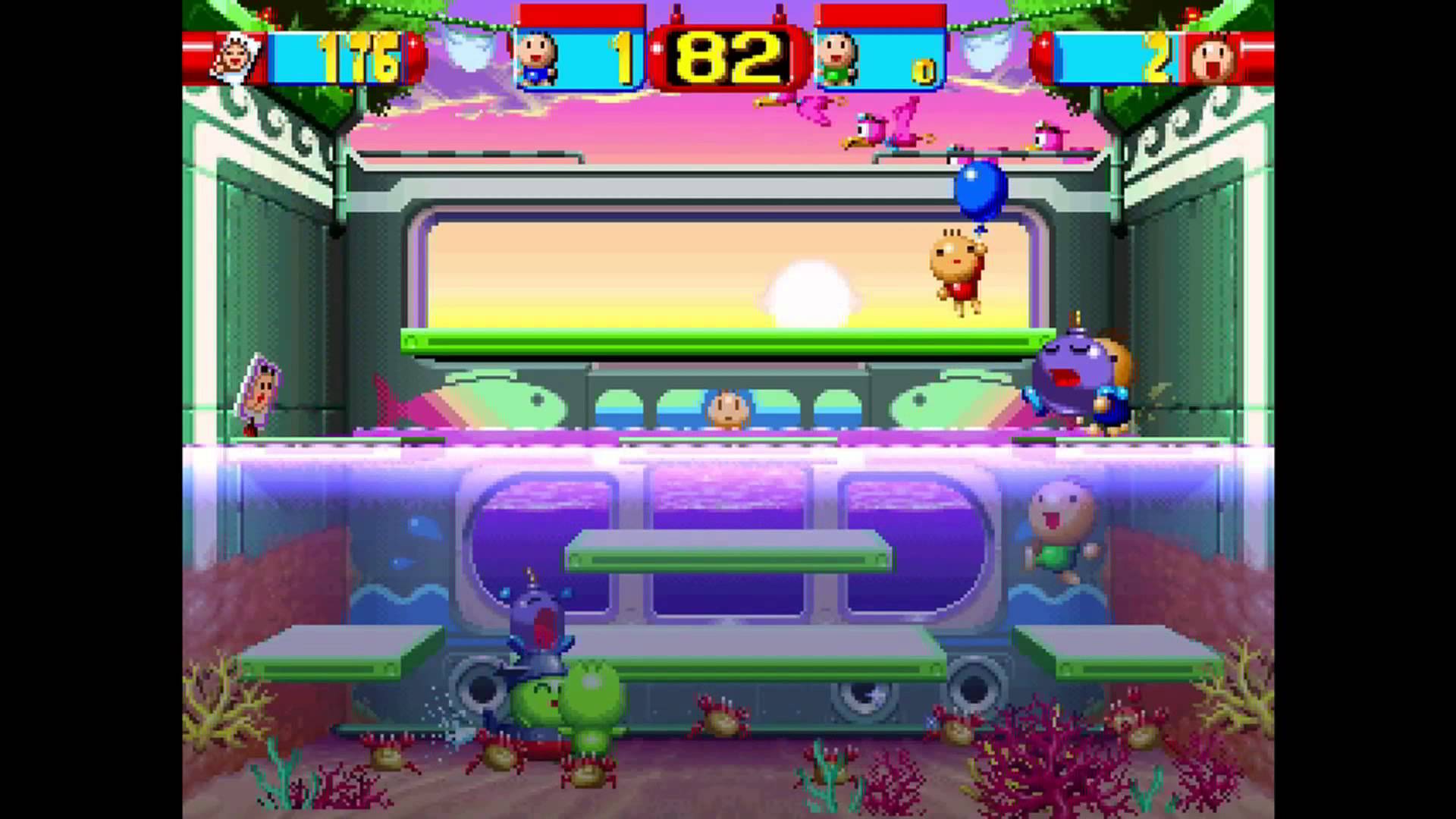
Here’s a decidedly strange arcade action game from Irem, which is actually a spin-off of a larger series of Japanese, Lemmings-like puzzle titles called Gussun Oyoyo. YoYo’s Puzzle Park is a single-screen platformer with a surreal premise: controlling the baby-like hero, you jump around and stun enemies with what looks like a giant party popper. Once a foe’s incapacitated, you finish them off by kicking a bomb in their face.
Even at the time of its release in the late ’90s, YoYo’s Puzzle Park felt like a bit of a retro throwback to games like Rodland or Psycho Pigs UXB, which means it never got much of a release in the west. All the same, it’s colorful and lots of fun, particularly in two-player mode.
59. Gradius Gaiden
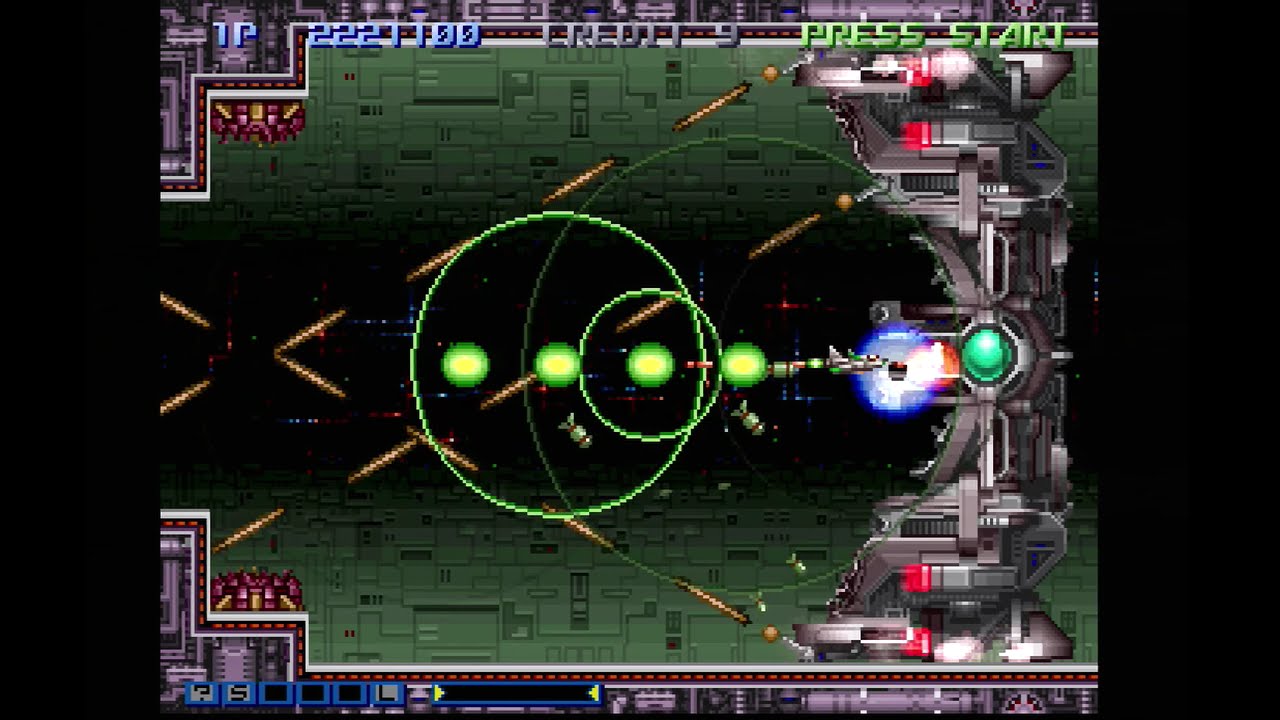
You’ll know all about the Gradius games if you’re into your retro 2D shooters, but the PlayStation-exclusive Gradius Gaiden is undoubtedly one of its most obscure entries. Released only in Japan, Gradius Gaiden saw Konami attempt to update the spaceship shooter template a little, with polygon graphics, additional weapons systems, and a greater variety of difficulty levels to court the less seasoned gamer.
It’s a superb game and one that takes great advantage of the PS1’s processing power. Its action may be rooted in ’80s arcades, but its big, meaty explosions and background effects (including a nice-looking aurora borealis shimmer on level one) give it a glossy feel.
Sadly, Gradius Gaiden‘s limited release makes it a bit of a collector’s piece these days. If you can’t afford the PS1 version, it’s also contained on the Gradius Collection release for the PSP.
58. Hogs of War
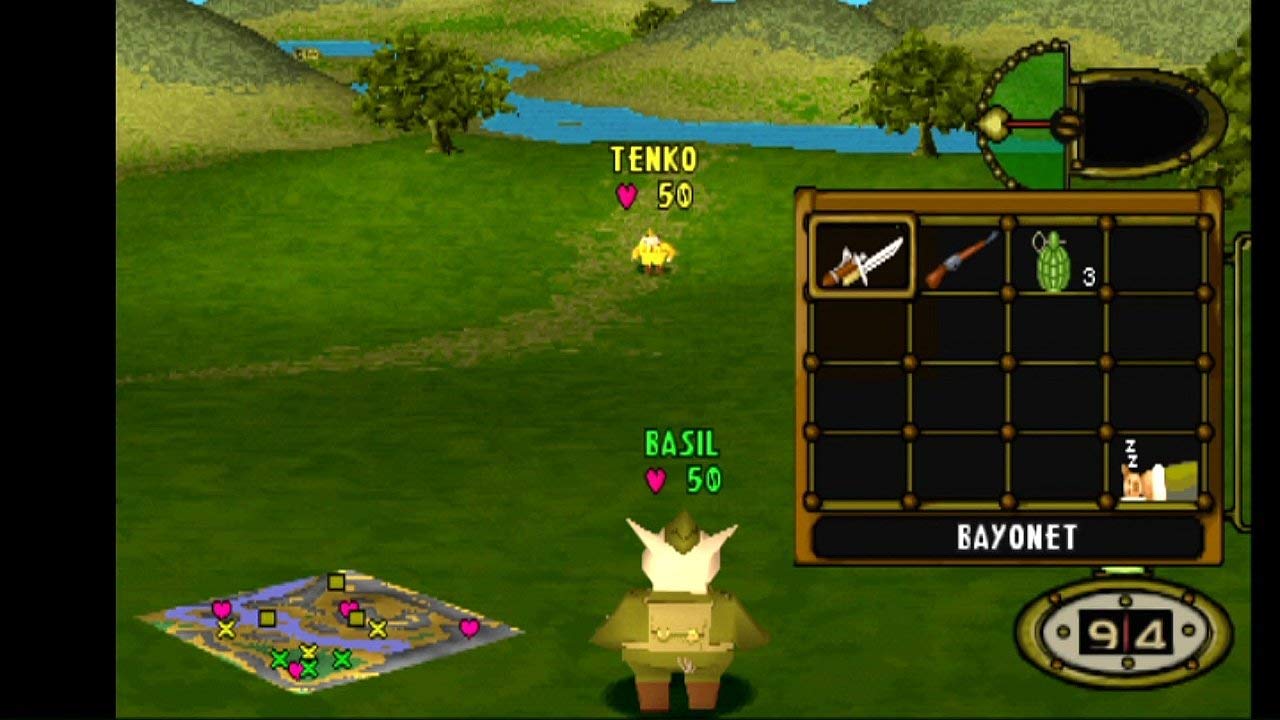
This turn-based strategy game got a bit of a lukewarm reception on its release in 2000, but we’d argue that it’s worth overlooking its more annoying quirks. In essence, it’s a kind of 3D take on the classic Worms, with rival squads of porcine soldiers murdering one another with a variety of tanks and explosives.
The controls are nicely tailored for the PS1’s controller, and there’s a surprising amount of tactical depth beneath the cartoonish presentation. Hogs of War also contains a welcome voice-over by the late, great Rik Mayall.
57. R-Type Delta
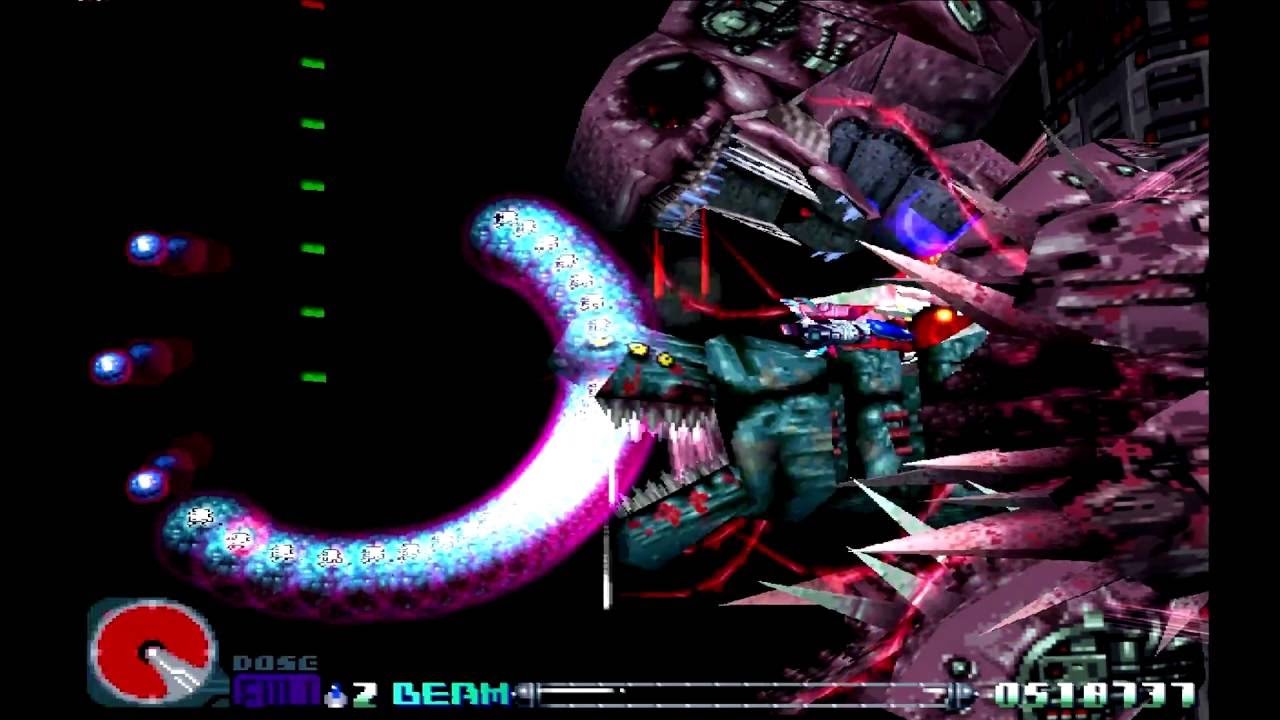
Like Gradius Gaiden, this is another console-only entry in a much-loved shooter series, and Irem’s first attempt to move its visuals from traditional sprites to 3D polygons. As a result, R-Type Delta doesn’t quite have the timeless quality of the original R-Type or its sequels, but it’s still a great shooter. This time, there’s a whole hangar of variant R-series ships to choose from, each with their own variations on the Force – the little indestructible satellites you can use as shields or deadly weapons.
Polished, slick, and ferociously difficult, R-Type Delta‘s one of the very best sequels Irem ever made to its seminal 1987 blaster. Indeed, we’d go out on a limb and say that Delta‘s a little better than the beautiful-looking yet glacially-paced PS2 swansong, R-Type Final.
56. Mr. Driller
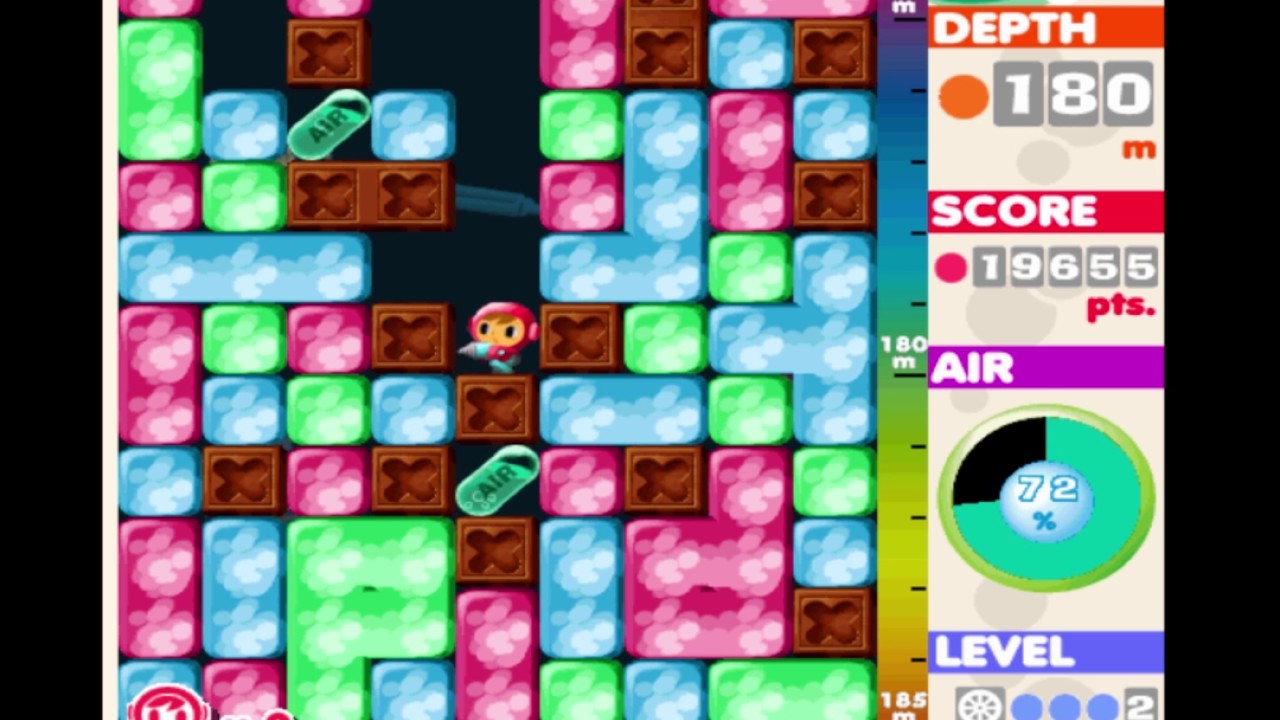
We’ve no idea why Namco’s adorable Mr. Driller isn’t a more popular franchise than it is. First appearing in late ’90s arcades, it’s an action game with a hint of strategy: your job is to drill down to the bottom of each stage, busting through rocks and collecting the air capsules that keep your ever-depleting energy bar from running out. The twist is that the blocks you drill through are shaped a bit like the ones in Tetris and have a tendency to fall down and crush you if you’re not careful.
From a simple premise, Namco created a hugely addictive and replayable gam. No two levels are alike since the blocks are randomly generated. This means that, even as your digging skills get sharper, you’re still only one poor choice away from an ignominious death. It’s a great game on the PlayStation and we’d love to see a Mr. Driller revival on the Nintendo Switch. How about it, Namco?
55. In the Hunt
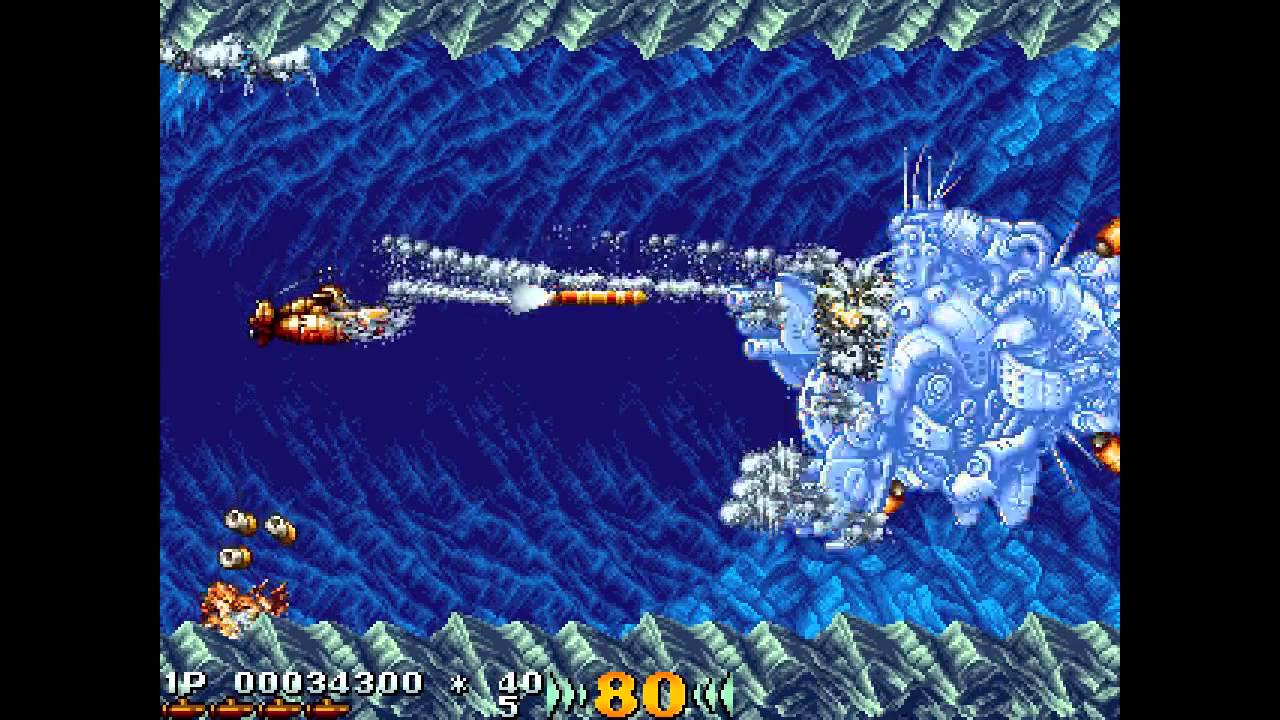
If you’re fond of the Metal Slug series, then you’ll immediately recognize the stunning sprite design in this horizontal shooter. You control a miniature submarine charged with blasting a path through an entire ocean of enemies, ranging from planes patrolling the skies above to huge bases on the seabed.
In the Hunt was overlooked at the time of its release, perhaps because its publishers tried to hide its 2D roots on the cover. Boot the thing up, though, and you’ll discover one of the most fun and original shooters the PS1 has to offer.
54. No One Can Stop Mr. Domino
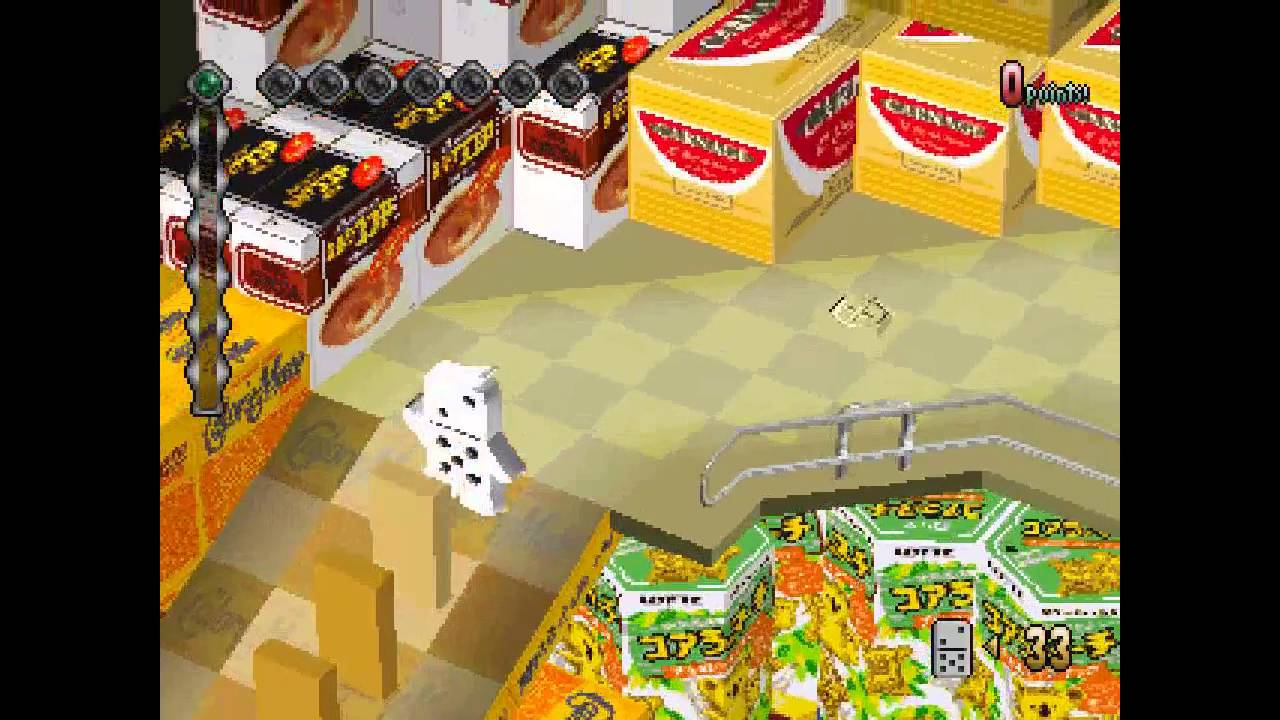
This is one of those quirky-looking games that, at first, seems completely impenetrable. Once you play it for a few minutes, though, No One Can Stop Mr. Domino proves to be challenging and curiously addictive. Traversing a range of 3D courses (which look a bit like the ones in those Micro Machines racing games), you control Mr. Domino, a lively little chap who refuses to stop running. The aim is to avoid hazards and obstacles while placing dominos on pre-defined squares by pressing one of the PS1 controller’s face buttons at just the right moment. Once they’re all in place, the dominoes are knocked over and the stage is cleared.
In essence, Mr. Domino‘s a kind of racing puzzler and one filled with the kind of surreal Japanese humor we’d see years later in Katamari Damacy. If you can find it at a reasonable price, this is an obscure title well worth picking up.
53. Pop ‘n Pop
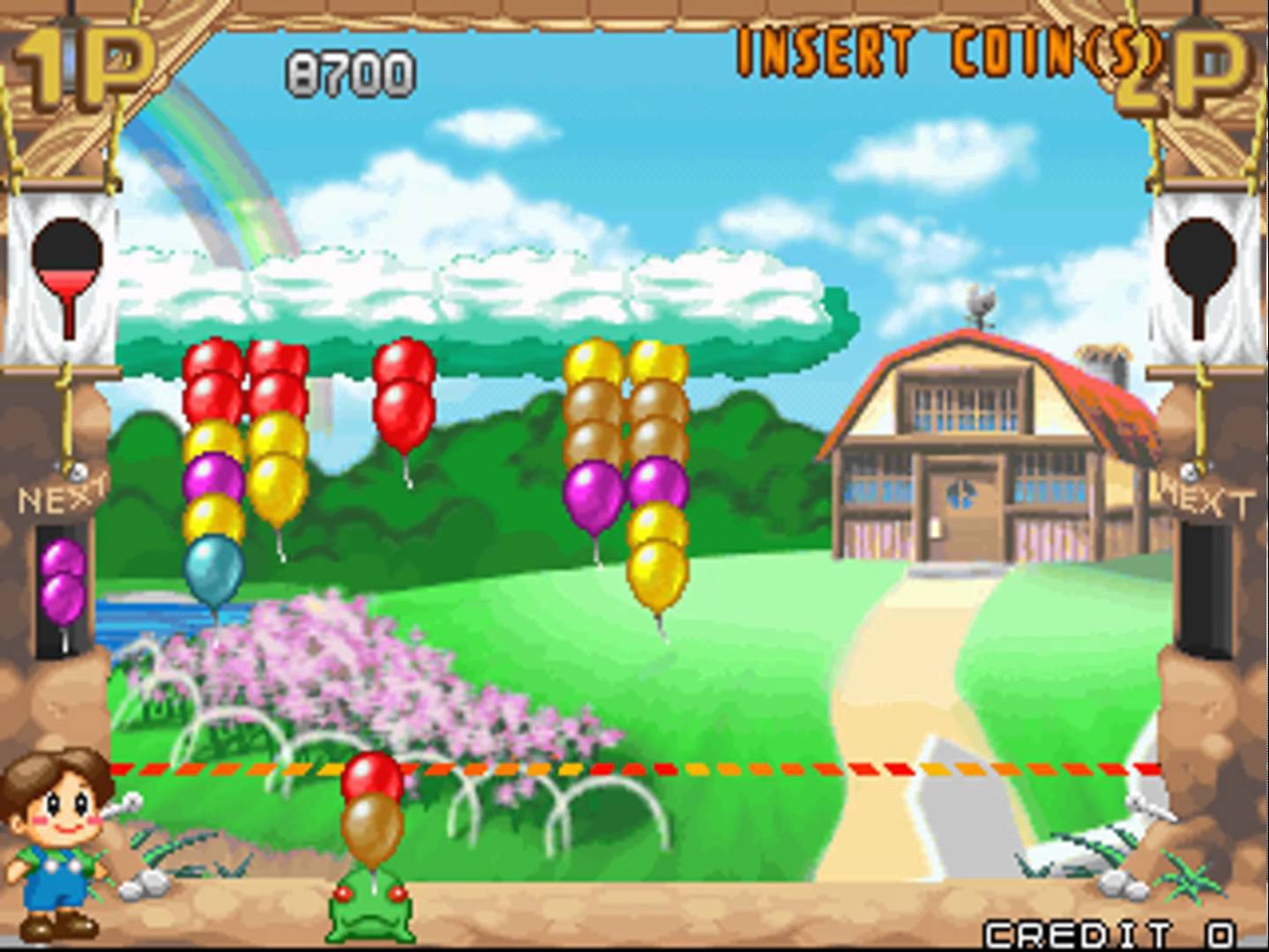
An adorable little action puzzle game that feels more like something from the SNES era than the cooler-than-thou days of the PlayStation, Pop ‘N Pop provides an affectionate nod to the classics of Taito’s ’80s era. Playable characters include Tiki the Kiwi from The NewZealand Story, the bubble dragons from Bubble Bobble, and lots more besides.
In essence, Pop ‘N Pop‘s a riff on the Puzzle Bobble/Bust A Move color-matching theme. You fire colored balloons at the other balloons at the top of the screen and burst them by matching like with like. That the balloons move left and right, and gradually descend towards your character at the bottom of the screen, means that Pop ‘N Pop has as much in common with Space Invaders as Puzzle Bobble. If you love Taito’s old output, this is a must-have.
52. Zanac X Zanac
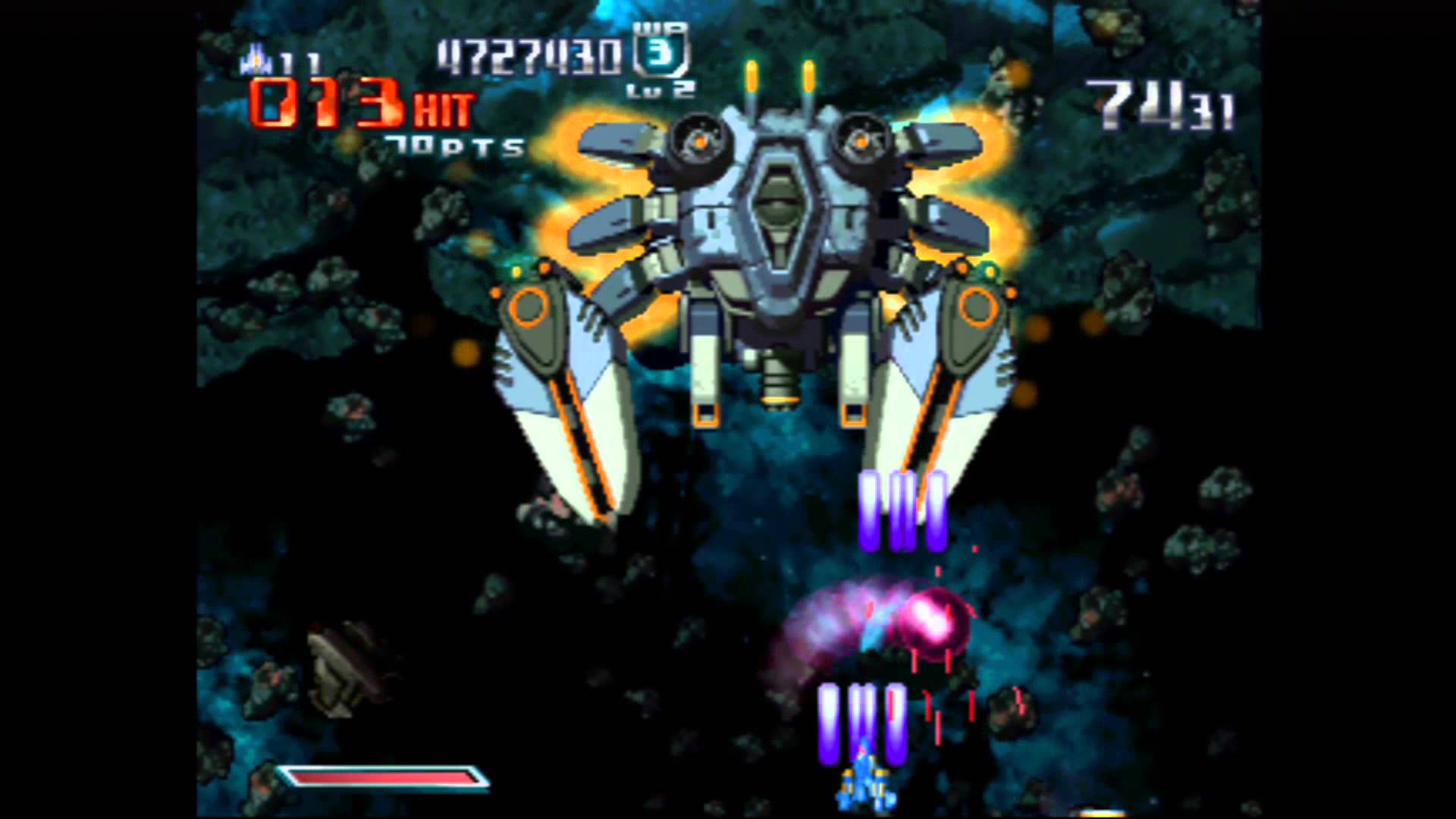
Japanese developer Compile was responsible for some classic shooting games, most memorably Musha Aleste on the Sega Mega Drive (or Genesis). Zanac X Zanac takes the firm right back to its beginnings since it brings together a port of the original Zanac (one of its earliest shooters) and pairs it with a 15th anniversary update, Zanac Neo. It’s all of a piece with the fast-paced, vertically scrolling action Compile perfected in the Aleste series, but Zanac Neo looks and sounds great on the PlayStation, even if it isn’t quite up to the peak brilliance of Musha Aleste.
Another low-key release in 2001, when 2D shooters had fallen out of favor, Zanac X Zanac is a bit of a collector’s item today. Regrettably, it was also one of Compile’s very last releases, so if you loved this studio’s shooters, then you may want to splash out and add this one to your collection.
51. Starblade Alpha
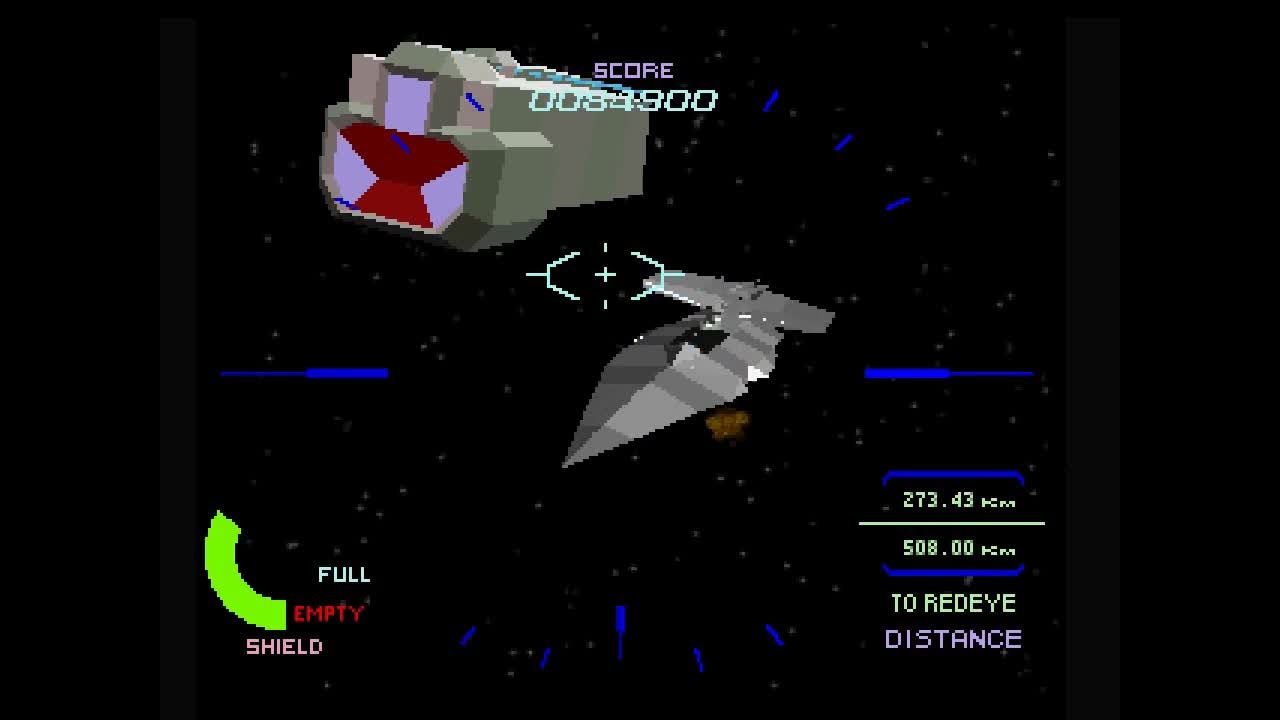
We love a good rail shooter and this is one of our favorites on the PS1. It’s simple, arcade-style stuff: taking on the role of an ace star pilot, you fly through asteroid fields and space danger zones, blowing up all the stuff that comes at you. Meanwhile, a commander barks orders at you to add a bit more atmosphere.
Starblade Alpha is, unfortunately, a bit pricey these days, but if you love blowing stuff up and generally pretending you’re the kid out of The Last Starfighter, then this ’90s Namco offering’s well worth your consideration.
50. One
One is a fast-paced shooter in which you play as an amnesiac with a gun arm on a mission to find out his identity. He attempts to discover the answer across six levels, and is constantly pursued by the police and military.
The game is an early example of a 2.5D title, and as the player runs through the various 3D rendered worlds, the camera zooms around automatically, giving the game a more cinematic feel. Action is thick and fast, and boss battles are challenging, often requiring special tactics to survive.
One received pretty high scores on its release back in 1997, and is still held in high regard by fans.
49. Rampage World Tour
If you’re an old-school gamer who was around in the 80s, you’ll no doubt remember the classic arcade title, Rampage. Starring three B-movie monsters – George the giant gorilla, Lizzie the dinosaur, and Ralph the giant werewolf, the game simply tasked players with one goal, and that was destruction of various cities.
Rampage World Tour on the PlayStation is a more up to date take on the classic, with better visuals, new locations spread around the world, and new power ups. The core gameplay, however, remains the same, and allows players to smash buildings, eat civilians, and mash enemy tanks. It’s simple, yes, but still as fun as it was back in the 80s.
48. (c-12) Final Resistance
Clearly inspired by a certain Arnie-powered killer robot, (c-12) Final Resistance is a third-person shooter that sees players take on the role of cyborg soldier Riley Vaughan, as he attempts to fight invading aliens who want the planet for the abundance of carbon.
Okay, so the story is a bit of old guff, but the actual game is very good, and takes place in various ruined cities and wartorn environs. Riley can utilize a range of weapons, including a powerful sniper scope, and he has to complete various other tasks alongside killing invaders to proceed on his mission.
Visually impressive for the PS1, (c-12) Final Resistance came out of the respected SCE Studio Cambridge, which would go on to become Guerrilla Games, of Killzone fame, making this an early example of things to come.
47. LSD: Dream Emulator
Without a doubt the most bizarre game on this list, and possibly of all time, LSD: Dream Emulator is as messed up and drug-induced as it sounds. Based upon the creator Hiroko Nishikawa’s own dream journals, the game lets you explore totally random and weird worlds, and was sadly, only released in Japan.
As with most dreams, these worlds make little sense, and by touching any object, be it a person, creature, or even a wall, you’ll jump from one dreamscape into another. Hitting people and certain objects makes your dreams stranger and stranger, and there are actually some genuinely scary moments to be witnessed. Dreams are measured in four categories – upper, downer, dynamic, and static, and after a set time you wake up, able to carry on with another, new dream, advancing the game’s day count by one. Eventually, you can replay your dreams, unless you run into a a man wearing a grey hat and trench coat, who can take this ability away.
It may not look all that attractive, in fact it’s downright primitive and ugly, but that’s not the point here. There’s not even any real goal, all you do is simply wander around tripped out worlds, over and over. For some reason, this is very addictive.
46. In Cold Blood
In Cold Blood is a third-person adventure with some action elements. Players take on the role of MI6 agent John Cord, who infiltrates the fictional Russian state of Volgia. Unfortunately, he’s captured and tortured, and this leads to him losing his memory. So yes, you’ve guessed it, it’s your job to help him escape and to ultimately remember his past and the events that led to his capture.
The game mixes in a lot of puzzle and stealth elements into the third person adventure, and the story is actually very interesting, keeping you ploughing along, despite some awkward action sequences. The high-tech spy setting and decent visuals are paired with some solid voice acting, and while it isn’t recommended for pure action fans, adventure buffs should seek it out.
45. Crusader: No Remorse
Also available on the Sega Saturn and PC, Crusader: No Remorse is an isometric shooter that few people have ever played. It may have blatantly stolen its main character design from a certain Star Wars bounty hunter, but the gameplay is great.
Developed by Origin Systems, the game mixes shooting and puzzles within a rich and detailed world. As the crimson-clad hero, the Silencer, you have to infiltrate various facilities, bypassing security systems, hacking computers, and taking out guards to achieve your ends. To do this you have a range of weapons and abilities, and you can destroy a lot of the objects in the world.
The controls are a little clunky and take some getting used to, but the slower-paced combat and flexible approach to completing your objectives are great.
44. Rapid Reload/Gunners Heaven
A blatant clone of Treasure’s Mega Drive classic, Gunstar Heroes (even the characters are treasure hunters), Rapid Reload is, nonetheless, a great side-scrolling shooter packed with action and some memorable boss battles.
Like Gunstar Heroes, the game features different ammo types, including a flame thrower and homing shot, and characters also have a grappling hook to help them navigate the six levels.
Rapid Reload was originally part of the first wave of PlayStation titles released, and although it didn’t push the platform technically, it was, and still is a great early outing, and the gameplay holds up today.
43. Fighting Force
Fighting Force is a 3D scrolling beat ’em up in the same style as Sega’s Street of Rage, and earlier classics like Final Fight and Renegade. In fact, it was originally planned as a Street of Rage title, but was later re-branded.
It features four different characters, with their own strengths and weaknesses, and alongside the usual melee combat, players can utilize weapons, guns, and the environment. Different paths through the game can also be chosen.
The game arrived to fairly average reviews on release, limiting its potential, and despite a sequel on the Dreamcast (which was fairly poor), it quickly vanished. The original is still held in high regard by fans, though, and it’s one of the first 3D beat ’em ups of its type, which makes it well worth a punt.
42. Wargames: Defcon 1
Although the only thing similar to the 1983 Matthew Broderick flick is the name and the inclusion of NORAD and WOPR, Wargames: Defcon 1 is a great game anyway, so it doesn’t matter if you like the film or not.
The story takes place 20 years after the film, and sees NORAD doing battle with the WOPR forces, which, like its digital buddy, Skynet, wants to eradicate mankind (why do computers need to be so bloody evil all the time?)
An action strategy title, players control various units on the battlefield directly, able to jump from one to another at will. Units not under player control can be given basic orders, including forming up on the player vehicle, and the two sides have vastly different forces, with NORAD having traditional tanks and aircraft, and WOPR sporting sci-fi mechs and advanced vehicles. Of course, the game also taunts you if you lose, asking if you prefer a nice game of chess. Nice.
41. Intelligent Qube / Kurushi
A simple, but devilishly challenging puzzler. Kurushi sees you trying to stay alive by destroying blocks that are continuously rolling towards you. You do this by highlighting areas of the floor to detonate, and timing the blast to hit the cubes as they roll over them. Some blocks can cause larger explosions and chain reactions, and others need to be left alone, otherwise you lose a part of the floor you’re standing on. It sounds simple, but this is an addictive and tough title.
40. Bloody Roar
What’s more fun than playing a larger-than-life selection of martial artists with over-the-top special moves? Playing a larger-than-life selection of martial artists with over-the-top special moves who can transform into animals, of course!
Bloody Roar may not be the best example of the combat genre, and other games like Tekken and Soulcalibur do a better job mechanically, but Bloody Roar‘s animal transformation and brutal specials create a supremely satisfying and enjoyable scrapper. Where else can you pit a mole against a tiger and have a good, balanced fight?
Even though it isn’t as polished as Namco’s offerings, Bloody Roar plays very well, with decent combo systems, and as each character has a human and animal form, the range of moves and tactics open to players is impressive. Well worth a look for beat ’em up fans.
39. Myst/Riven
The Myst series as a franchise is far from underappreciated, but on the PlayStation it hardly made a splash. True, the slide-show puzzler has always been about as divisive as you can get, with console owners being far from the game’s original core demographic, but as a game in its own right, few can hold a candle to the brilliant puzzles and superb atmosphere Cyan Worlds’ titles ooze.
Both Myst and Riven appeared on the PlayStation, and for those looking for a truly challenging brain bender, this is a good choice. The mysterious island and the worlds that follow all contain some of the most bizarre landscapes around, dotted with tough puzzles. Solving the game requires all of your grey matter, and this changed little on the PlayStation.
Riven was, and still is, the hardest of the series, and ups the ante when it comes to mental callisthenics, and is every bit as absorbing as the debut title, Myst.
38. MDK
It seemed like a big release for its time, coming from Shiny Entertainment, creator of Earthworm Jim, but on the PS1 it didn’t really get out of the starting blocks. This is a shame as, although short, MDK was a great third-person shooter, packed with humor and unique features for the time.
As heroic janitor Kurt Hectic, you have to save the earth from invading aliens, and you use the powerful coil suit to do so. This suit allows Kurt to glide long distances and take out his foes both at close and long range, thanks to a powerful arm machine gun which can be slotted onto Kurt’s head to form a sniper rifle.
It’s a very quirky title with impressive visuals for the time, and some interesting missions and mini games. It spawned a sequel, but many fans still say the first is the best of the two.
37. Jade Cocoon
This is an RPG that combines some of the more traditional RPG elements with creature training and evolution. The protagonist, Levant, is a Cocoon Master who is able to capture and tame Minions. These creatures can be used to fight for Levant, and can be fused together with other Minions to create more powerful beings that inherit the skills of the paired creatures.
Battles mainly consist of plentiful use of elemental powers, with the various abilities having strengths and weaknesses against others. Fire attacks beat wind, for example. Minions possess these elemental powers, with more powerful, new generations of creatures having more than one. The graphics are good, the audio design great, and the game world is expansive, making for a unique, well-rounded RPG.
36. Blood Omen: Legacy of Kain
The first game in the Blood Omen series, preceding the more well-known installments like Soul Reaver, Blood Omen: Legacy of Kain is not a 3D action adventure like it’s sequels, but is a top-down action RPG. It features full voice acting (some of which is unintentionally humorous), and simple, but enjoyable hack-and-slash world-roaming and dungeon-crawling.
The game is an origin story, depicting the series’ main antagonist Kain’s rise to power as he hunts down and slays the Circle of Nine. As well as his martial skills, Kain also possesses various magical abilities, such as shape-shifting, and he attains more skills and items as he progresses, similarly to Nintendo’s Zelda series.
35. The Misadventures of Tron Bonne
Part of the Mega Man Legends series, The Misadventures of Tron Bonne casts players as the titular anti-heroine, and features various gameplay styles, including 3D action, puzzles, and strategy. Using her robotics and army of Servbots, Tron is on a mission to raise money to pay off a family debt, which means making money in any way possible, usually by stealing.
Tron’s army of Servbots is a big feature of the game, with each one having its own personality, and they can be improved by undergoing training minigames. The visual style is the same as the other Legends games, and it’s a gleefully colorful and enjoyable robotic romp, even if it strays far from the usual Mega Man-style of play.
34. Galerians
Galerians is one of the more interesting Resident Evil clones, and focuses not on traditional, scour-the-area-for-every-single-bullet play, but instead features the use of mind powers. As protagonist Rion Steiner, a boy who wakes up with no memory, players explore the hospital he wakes up in. By using special drugs, he can utilize his psychic powers to combat foes. If Rion takes too much damage, he can unleash a powerful, but uncontrollable assault, killing foes instantly.
Still satisfying the survival horror mechanic, Rion needs vials of drugs to fuel his powers, of which there is a limited amount, so conservation is still needed while navigating the world and solving puzzles.
Galerians was originally lost in the fever surrounding Resident Evil and Silent Hill, but genre fans should certainly check it out.
33. Tobal 2
Sadly, Tobal 2 never got a release outside of its native Japan, which is a shame as it’s one of the better fighters on the system. It might not have the mainstream appeal of Tekken and its ilk, but the core fighting engine of Tobal 2 is one of the best of the generation, and the combo system is fast and fluid, all running at an impressive 60 fps. There’s even an RPG-style quest mode spanning several dungeons to add more longevity to the core fighting. This combat doesn’t need all that much help, though, with around 200 characters to choose from, and a fully 3D fighting arena. A quality title that’s a must import for the genre’s fans.
32. Tempest X 3
For the handful of people who bought an Atari Jaguar (and the few who didn’t immediately take it back to the shop), one of the best games for the system, and an all-time classic arcade title, was Tempest 2000. Tempest X 3 is basically the same game, but for the PlayStation.
Jeff Minter’s trademark acid trip visuals and a thumpingly brilliant soundtrack accompany the eye-melting action, and the result is a digital, high score-seeking drug. As simple as it is addictive, Tempest‘s gameplay hasn’t aged one bit, and this is clearly evident in this version of the game, which is straightforward, reflex-challenging bliss.
31. Disruptor
Created by Insomniac, the team responsible for the Resistance series, Disruptor is a great early example of a non-N64 console FPS title that worked well, with decent controls and steady challenge.
Disruptor is a traditional corridor shooter at heart, with a range of decent weapons and psi powers accompanying the bullet-slinging. It looks pretty good for an FPS release of the time, and although it does little all that differently from other similar period entries in the genre, psi powers aside, it’s one of the best FPS releases on Sony’s debut platform.
30. Vandal Hearts
This was one of the first tactical RPGs to arrive on 32-bit, and is very similar in gameplay to Sega’s Shining Force series. Unlike Shining Force, Vandal Hearts is an isometric game with much better visuals. Players take turns moving their units around the grid-based battlefields, which feature varying heights and terrain types. Units can attack and use abilities, and when all have had a turn, the enemy units have their go.
It’s an RPG game of chess, where the outcome isn’t simply decided by higher levels or even a player’s manual dexterity, but instead well planned out tactics and strategies. This makes Vandal Hearts a very different RPG experience to the majority of similar titles on the PlayStation, and one that should be very welcome to players looking for a more mental role-playing challenge.
29. Alundra
Want to play Zelda on your PlayStation? Well, although impossible at the time of release and today, there’s always a great alternative in Alundra.
Clearly a blatant Zelda clone for Sony’s console, Alundra is a top-down action adventure with light RPG elements. It features the same hack-and-slash combat as Nintendo’s series, as well as item gathering, and adds in the ability to explore other people’s dreams and nightmares. There’s also a heavy puzzle element, some of the most difficult in the genre.
28. Ehrgeiz
Ehrgeiz is a dream game for many PlayStation owners. Not only is it a cross between Tekken and Powerstone, but it features Final Fantasy characters battling it out in full 3D. Yes, fans actually get the chance to wield Cloud’s Buster Sword and to play as the iconic Sephiroth.
It isn’t as smooth as competing fighters, but this is a fighter that’s sold on the strength of its characters, and for Final Fantasy VII fans, this is more than enough. Sadly, though, it didn’t do all that well commercially when it released.
Alongside the combat modes, the game also features a quest mode, much like Tekken‘s later installments that are crammed in as a side show. This boasts a long dungeon crawl-style of play, complete with item looting and a hunger status. Other minigames are also featured, further bolstering the longevity of the title.
27. Persona 2: Eternal Punishment
Now a cult series of wacked-out RPGs, the Persona series also found a home on the PS1, and Persona 2is a great example of what the traditionally off-the-wall series has in store. Played in third-person, with random battles and the persona system that grants new strengths and abilities, it’s a different, but no less absorbing role player.
Personas can be levelled up with use, and new personas are acquired by gathering tarot cards and attracting demons. The rumor system is intriguing, and new rumors can be collected with various outcomes if the player pays for the rumor to become fact. Quriky? Yes. Great? Most definitely.
26. Heart of Darkness
This was quite the hype monster back before its release in 1998, and it took six years to develop. It includes an impressive orchestral score (one of the first games to do so), FMV cutscenes, and some of the best graphics around at the time. It also plays well, and features a myriad of ways for the main protagonist to die, some actually pretty grim to be honest.
Sadly, the game didn’t live up to its lofty ambitions, and partly due to a very short length, it didn’t do all that well at retail. This is a shame, as it’s still great, and it could have been a decent series if the developer, Amazing Studios, hadn’t moved on from game development.
25. Suikoden II
The second game in the series, and another excellent JRPG for the PS1, Suikoden II doesn’t try to follow many of its stable mates by using flashy 3D or technical prowess. Instead, it simply goes for pure, traditional JRPG 2D quality, and tasks you with recruiting a myriad of characters to aid you in your fight.
The storyline is one of the better to be found in the often poorly-translated JRPG genre, and the purposely traditional design focuses fully on gameplay, and it doesn’t disappoint.
24. The Legend of Dragoon
A Sony-published RPG, and one that was initially criticized for being overly generic, The Legend of Dragoon has become a cult classic for PS1 fans. The game is a clear product of the Final Fantasy era, and has many similar features, including random encounters (which can be avoided if the player wishes).
Although it apes a lot of FF features, The Legend of Dragoon also has some unique features, most notably the Additions system that features user-input combos to open up more powerful attacks. Characters can also transform into the titular Dragoons once they acquire a Dragoon Spirit.
Many fans of the game actually consider The Legend of Dragoon to be superior to the Final Fantasy series, such is its impact, and this definitely makes this a game to seek out if you’re looking for some classic PS1 RPG action.
23. Rival Schools
One of Capcom’s most overlooked releases, Rival Schools is a great example of the 3D one-on-one brawler. Set in typically colorful Japanese-style schools, complete with dodgy schoolgirl underwear flashing, combatants vary from martial artists to sports players, and you pick two of them at a time. One is your actual combatant, and the second is used to the game’s team-up special attacks.
Rival Schools only uses four attack buttons, which was odd for a Capcom title, but the fighting system works well, and is surprisingly deep and satisfying. The characters are all interesting and different from the usual selection of overused world warrior archetypes, and the introduction of the “vigor” meter allows access to more powerful moves as you fill it up during a fight. It also includes launch moves that open up air combos and juggles. Great stuff.
22. Klonoa
Klonoa is a lesser-known 2.5D platformer, and to genre aficionados it’s one of the best on the system. It features a striking art style and a main character who can pick up and throw his foes at each other, or use them as stepping stones for higher jumps.
This is wrapped up on some of the most well-implemented platforming on the system. It’s a shame the game is a little short, even for a platformer, but while it lasts, it’s gold.
21. Silhouette Mirage
Treasure is one of the the most acclaimed developers of the 16- and 32-bit era, and it made a big name for itself by creating off the wall titles with distinctive twists. Silhouette Mirage is one of those titles, and it’s a side-scroller that plays like a mash-up of two other Treasure titles, Gunstar Heroes and Ikaruga.
The main twist of the game is main character Shyna’s split abilities. Using both Silhouette and Mirage powers, you have to attack your foes with the opposite power, similar to Ikaruga‘s polarity-switching mechanic. Silhouette enemies are defeated by Mirage, and vice versa. The added twist is that to use each power, you need to be facing the right direction.
This produces a very interesting and quirky take on side-scroller play, and being a treasure title, it packs in great visuals and a well-balanced difficulty. It’s also very challenging for completionists, as you have to complete the game numerous times with only a handful of continues to unlock all of the secrets.
20. Jumping Flash
One of the PlayStation’s launch titles, and still to this day, one of the best. Jumping Flash was one of the first ever attempts to create a first-person platformer, and for the most part, it worked. This is big praise as even now, very few games that have attempted the same thing have got it right. Oh, and you play as a robotic rabbit named Robbit, which is nice.
The game features bold, colorful worlds to jump around in three dimensions and sports a rather unique interface, complete with radar and an auto view tilt when you jump, so you can see where you were going to land. It mixes this platforming with first-person shooting of sorts, and item collection goals with boss battles.
The game plays well, even with the PS1’s limited tech, and it set the stage for 3D platformers to come when it first arrived, so it deserves praise if only for its precursor status.
19. Tomba 2/Tombi 2
A 2.5D platformer of the Metroidvania-style, this is another often overlooked, but trend-setting title on the PS1, despite the protagonist having bright pink hair. As the feral hero, players explore the large environments of the game, jumping in and out of the background and breaking the traditionally linear platforming mold. Players can also choose where they want to go at various points. Some areas of the game open up with top-down gameplay that allows more freedom, and there are tons of missions to try out, over 100 in total.
The variety in the game is pretty good for a platform title, and in order to fully complete it, you have to finish every challenge, which is quite tricky. Each completed mission grants adventure points, used to open reward boxes scattered around the world.
Taking a page out of Mario’s book, Tomba can also wear various power-up suits that give him different abilities, such as a flying squirrel that allows gliding and pig suit that lets him talk to pigs. This, and its prequel, were also among the first titles to utilize the now standard DualShock control method.
18. Silent Bomber
Imagine Hudson Soft’s Bomberman series, only faster, with open levels and more anime hair, and you’ve got Silent Bomber. This is a great fast-paced, top-down action title in which you complete missions by running around like a loon, jumping, and wall climbing, while throwing and detonating bombs to blow up your foes and objectives.
It features a character upgrade system, big boss fights, great set pieces, and some pumping audio driving the action along, and the quick fire bombing holds up throughout.
17. Star Ocean: The Second Story
On a platform that’s so well endowed with RPGs, especially of the JRPG persuasion, it’s easy for truly great titles to get lost in the mix, and Star Ocean is one such example. Although overshadowed by other, more recognized titles, Star Ocean: The Second Story is one of the best RPGs on the system.
Underneath some great and lovingly polished presentation, the game has a solid combat system, a massive quest, a unique item creation tool, and multiple endings. The series has jumped ship to various platforms since, but this is one of the best, and it’s well worth seeking out if you still have your PS1, and are a fan of classic JRPGs.
16. Puzzle Bobble 4/Bust-A-Move 4
Most gamers are well aware of the Puzzle Bobble/Bust-a-Moveseries of games, and the slew of clones that have carbon-copied the series into obscurity, especially on mobile devices. Taito’s franchise was the first, though, and most would agree, the best.
Puzzle Bobble 4 on the PS1 is one of the best examples of the series, too. With well over 600 levels and new pulley/scale system game mechanics, this is also one of the finest puzzlers on the platform, period. Both a story and arcade mode are present, along with puzzle mode, challenges, and more. You can even use the level editor to create your own challenges. Chain reactions are also introduced in two player matches (and 1P vs. CPU). The various modes and excellent two player challenges make this a no-brainer for puzzle fans.
15. Super Puzzle Fighter 2 Turbo
With Street Fighter dominating the genre, Capcom decided to broaden the series’ horizons by creating Puzzle Fighter. Like many of the best puzzle games, the core gameplay is simple – match colored blocks and drop them on your opponent. It features cutesy versions of popular Street Fighter characters and special moves based on the fighting title.
As with many popular puzzlers, the game has been cloned (it was itself based on Capcom’s Pnickies), most notably in Mortal Kombat: Deception. It’s also been ported to modern consoles via PSN and Xbox Live, but the PS1 version is one of the best, and despite bearing the Street Fighter name, could have done much better.
14. Legend of Legaia
Consistently brought up in underrated discussions by fans, Legend of Legaia is one of the most fondly remembered titles on the platform by genre fanatics. One of many examples of fine JRPGs on the system, it features a turn-based combat system that allows players to choose the type of attack by selecting left or right attacks, as well as high and low. Depending on the equipment used, these attacks can be greatly affected. High and low attacks can be useful in different situations, with low attacks missing flying enemies, for example. Characters can also team up with powerful entities called Ra-Seru, which augment their abilities.
Although not entirely revolutionary, Legend of Legaia is a great RPG that ticks all the boxes needed to produce a winning formula, and it remains a firm fan-favorite to this day.
13. G-Police
A technical powerhouse, and a perfect game to show off the power of the PlayStation, G-Police was one of the most impressive releases on the system in its day. Developed by Psygnosis, the game puts players in control of agile Police craft in a sci-fi setting.
Utilizing unique (at the time) vibration features alongside some truly impressive visuals, G-Police is one of the hardest games on the platform. Some may argue that this is due to clunky controls, but fans weren’t, and still aren’t put off, and the game is still a firm favorite, and can even be bought for the PS3 via PSN.
12. Colony Wars
Although the space setting isn’t quite as technically impressive as G-Police‘s fully rendered cityscapes, Psygnosis’ Colony Wars is arguably the better actual game of the two. It also spawned two sequels in Vengeance and Red Sun, but the series faded away, which is a shame.
A space combat sim, Colony Wars features smooth space dogfights, and a non-linear mission structure, with mission failure not always leading to a game over, but instead changing the progress of the missions, a nod to the classic, genre stable mate, Wing Commander.
The game features a number of possible endings, making for increased replayability, and there are few similar titles of this genre as good on the PS1.
11. Bishi Bashi Special
Long before Nintendo’s Wario developed a taste for tiny, bite-size minigames, Bishi Bashi Special was shaking soda bottles and wasting mechanical pencil lead on the PlayStation with style and content that could only come from Japan.
One of the best party games ever made, especially if you use two PlayStation mult-taps to enable eight player support, there are few times when button mashing is so much fun, even in the wake of motion-controlled silliness. What makes it all the most enjoyable is the bizarre nature of it all, and the crazy selection of challenges, something of a rarity at the time of release for Western audiences, only served to make the whole thing more of a post-pub staple for drunken gamers, a trend that continues for fans today.
10. Um Jammer Lammy
A sequel of sorts to the more famous Parappa the Rapper, Um Jammer Lammy follows the same formula as the previous release, but has a focus on guitar playing, rather than rapping. Like Parappa, Lammy has to play various songs alongside her teachers with players reproducing button presses as instructed.
The game is more difficult than Parappa, which puts many off, but it’s the superior of the two as it not only has a more in-depth challenge, but also a two player mode and Parappa remixes. Once again, it makes for a brilliant party game, post-pub or otherwise, and few games, even the original Parappa, can match its psychedelic visuals.
9. Ghost in the Shell
Based on the popular anime, Ghost in the Shell is a third person shooter which puts players in the cockpit of a powerful, wall-climbing, ‘Fuchikoma’ tank. This tank is impressively agile, offering the kind of freedom of movement few others games possessed at the time of release. Many levels see you jumping and climbing around increasingly more complex landscapes, and this is necessary as the enemy can be very dangerous, so you need your agility to get the drop on them.
Ghost in the Shell is widely considered to be one of the best anime tie-in games, even if it didn’t originally sell all that well, and was missed by many. Whether of not you like anime or the series the game is based on, this is a great action shooter regardless.
8. Bushido Blade
As with a lot of underappreciated titles, Bushido Blade is a game that takes a famliar genre and attempts to do something differently. This time it was to replace fisticuffs and flashy special moves with realistic, insta-death sword fights.
Although it may not have worked from a commercial standpoint, hence its inclusion here, Bushido Blade‘s combat is both rewarding and addictive. It does away with the ability to button mash your way to victory, and instead features a combat system that requires genuine skill and perfect timing, especially when going up against another human opponent.
Perhaps its focus on a more realistic and low-key setting, coupled with the rather mundane characters, compared to the competition at least, did it no favors initially, but overlooking this yields some truly brilliant combat packed with depth.
7. Die Hard Trilogy
The only thing better than one John McClane is three of him, and that’s just what Die Hard Trilogy delivers, and it does so in a very impressive way.
Spanning the first three Die Hard movies, Die Hard Trilogy features three different games in one package, all of which are great. Die Hard is a third-person action-shooter, Die Hard 2: Die Harder is a Virtua Cop-like shooting gallery (with light gun support), and the jewel in the crown is Die Hard with a Vengeance, which is a challenging, checkpoint-lead driving game.
All three titles are full games in their own right, and the mixture of styles make for a long-lasting challenge, and what a challenge it is. The on-rails Die Hard 2 is enjoyable, but both Die Hard and Die Hard with A Vengeance are very tricky, with the latter being the hardest of the three. This challenge is always on the right-side of fair, though, and for its time, this was a very impressive compilation. And it’s Die Hard, which just never gets old (until Die Hard 4.0, anyway).
6. Policenauts
Directed by Metal Gear creator, Hideo Kojima, Policenauts is very similar to the previous, excellent Sega CD title, Snatcher. Like the previous game, this is a point-and-click interactive comic of sorts, with shooting segments. By clicking on the environment, the protagonist, Jonathan Ingram, can analyze items and converse with people in order to investigate the circumstances surrounding his wife’s death.
Unlike Snatcher, which was a cyberpunk story set in Neo Kobe on Earth, Policenauts takes place primarily in space, on the colony Beyond Coast. Also, like Snatcher, it’s one of the first games to feature such high quality voice acting throughout, and also sports FMV cutscenes.
The game has never been released outside of Japan, and was initially only available on NEC PC-9821, 3DO, Sega Saturn, and PlayStation. However, a fan-made English translation has since surfaced online.
5. Vib Ribbon
Released in Japan in 1999, and everywhere else in 2000, Vib Ribbon is one of the most original titles you’re ever likely to play, and is one of the best examples of the music genre. You don’t even need a cheap, plastic guitar.
Using either the supplied music, or your own, your goal is simple, to guide the enigmatic protagonist, Vibri, along a straight line that warps and shifts along with the music. As the music plays, the line changes, generating obstacles that can be avoided with well-timed and correct button presses. The obstacles are generated in time with the music, which means that the style and tempo of music you use can actually affect the difficulty.
Classical and chill out music may be relatively simple and sedate, while heavy metal or dance music can produce the kind of obstacle avoidance test that could tie your fingers in knots.
The gameplay is as simple as it gets, but is brilliantly implemented, and although Vibri is made up of basic, vector-style lines, he’s a charming and likable character, and evolves or devolves depending on your progress, much like the later, PS2 and Dreamcast music title, Rez.
4. Future Cop LAPD
A criminally (if you’ll forgive the pun) overlooked gem of a game. Future Cop LAPD is a great sci-fi action title that sees you control a powerful law enforcement mech (that can transform into a car) on a series of missions. The gamepley somewhat resembles that of EA’s Strike series (which is well overdue for a return), and the entire campaign can be played in split-screen co-op.
Alongside the main content, there’s also a basic strategy game included, complete with unit building. This can also be played by two players. Great value and a great game.
3. Legacy of Kain: Soul Reaver
Considered by many fans to be the best of the long-running series, Legacy of Kain: Soul Reaver is a Tomb Raider-inspired Gothic adventure in which you play as Raziel, an-ex vampire lord who now stalks the world devouring souls looking for revenge against his former master, the titular Kain.
Created by Crystal Dynamics, who ironically now heads Tomb Raider, the game takes plenty of inspiration from Ms. Croft’s outings, including a heavy focus on block puzzles and environmental navigation. Unlike Tomb Raider games of the period, however, Soul Reaver features a large, open world with no loading times, a big feature at the time of release. This world is split into various regions, each ruled by a different vampire clan, the leader of which Raziel has to locate and defeat in order to acquire new abilities. Raziel can also switch from the living and dead planes, and this serves as a major puzzle and plot device.
This all amounts to a brilliant mixture of Tomb Raider and Metroid, with areas opening up once Raziel acquires the powers needed to access previously closed-off zones. Throw in some Zelda-style combat and all sorts of supernatural abilities (which also make for some very impressive puzzles) and you have a fantastic fantasy adventure.
2. Parasite Eve 2
While Resident Evil and Silent Hillmay have captured all of the mainstream attention in the survival horror genre, there was another series that was every bit as good – if not better, according to its fans. This was Parasite Eve, which mixed Resident Evil-style survival horror with RPG elements to create a very different take on the genre.
Parasite Eve II is the highlight, and stars returning protagonist, FBI agent Aya Brea. She’s once again investigating outbreaks of Mitochondrial creatures, in events set two years after the first game.
Unlike the first title, PEII features a real-time battle system, reminiscent of Resident Evil, and this is tempered by the Parasite Energy system that grants Aya special, magic-style abilities. Although it’s certainly a survival horror, complete with puzzles and pre-rendered environments, there’s a larger emphasis on combat, and here you also need to level Aya up, improving her abilities and customizing her weapons. This is important, as later enemies became increasingly more and more deadly, and unprepared players can be unceremoniously destroyed.
The far deeper gameplay and great presentation arguably make Parasite Eve II the superior title to Resident Evil, so it’s strange that is sold relatively poorly.
1. Vagrant Story
It’s crazy to think of a SquareSoft RPG title as being underappreciated, given that the PS1 was arguably one of the finest hours for the company, but the sublime Vagrant Story is just that. It is a very different kind of RPG for the traditionally turn-based JRPG developer, but one that’s blissfully refreshing and difficult.
As elite an Riskbreaker named Ashley Riot, your mission is to infiltrate the creepy, abandoned city of Lea Monde in pursuit of cult leader Sydney, who’s kidnapped the Emperor’s son. The city is populated with all manner of beasts and monsters, along with powerful bosses. Along the way we also discover Ashley’s troubled past.
What sets Vagrant Story apart from its RPG brethren is the overall style. Instead of a traditional turn-based approach used by the likes of Final Fantasy, here the game fuses both turn-based and real-time with action-adventure exploration and puzzle solving.
Combat is essentially turn-based, but is more fluid. You can move around during combat, which flows seamlessly with exploration, eschewing random battles, and you use a unique targeting system to strike various enemy body parts. As you fight, your “risk” meter fills up. The higher it gets, the less likely your hits are to connect, but critical hit chances are increased. With careful timing, you can string together attacks endlessly, using your own custom move set, and a full counter attack system is in place.
Outside of combat, Ashley can craft his own weapons, and all of these gain experience (affinity) against specific enemy types as they’re used. There’s also a hefty dose of block-based puzzling, all wrapped up with a visually impressive, very different style, and a good story with strong characters.
The game is very tough, requiring the mastery of all of the game’s systems in order to survive. You could say this was the Dark Souls of its time, and it’s the go to game for RPG fans wishing for both a unique experience and a big challenge. Sadly, these strengths didn’t turn out to be enough when it released, and any hopes for a sequel were dashed.
Did we miss something? Is there an underrated gem you fondly remember? Lets us know in the comments.